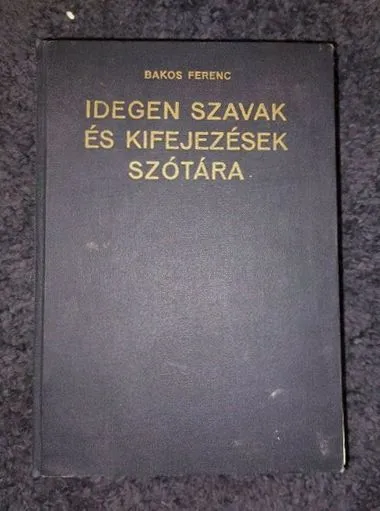The clocks that use Roman numerals mix in letters.
Don’t forget about π
τ > π
τ = 2π, but yeah that’s another letter that we can’t help but get involved
Also why clockwise?
Earth rotates and orbits counter clockwise. It just seems more right
To be fair whichever direction they made it go would be clockwise
True, but also it’s because of sundials
Earth rotates and orbits counter clockwise.
No it doesn’t. It depends on the human perception of “up” and “down” which are completely arbitrary. We by convention see the North Pole as the “top” of the world but it could as easily be seen as Antarctica.
Also why clockwise?
We read from left-to-right, so the front span of numbers continues that visual pattern.
We?
Yes. This post is in English.
deleted by creator
And there are a rare few instances of writing systems that alternate left-to-right and right-to-left on each line
I know a language which kinda-sorta has two writing systems, one of which is left-to-right, the other one right-to-left.
Which one?
I don’t know which one HK65 is referring to, but I know a few examples:
- Punjabi, which is left-to-right in India and right-to-left in Pakistan (the Indian one being influenced by older Indian scripts and the Pakistani one by Arabic)
- Kazakh uses the RtL Arabic script in the part of China where there are a lot of Kazakhs and the LtR Cyrillic script in Kazakhstan
- At least some of the kinds of Tamazight (spoken by Amazigh people, mostly in Morocco and Algeria) use Arabic script, but there is a script specifically for Tamazight languages called Tifinagh which goes left to right and there’s also some use of the Latin alphabet for these languages
Now that I think about it: Yiddish is traditionally written in Hebrew script but also in Latin. I don’t know if the Latin is “just” a transliteration but I think both are standardized (which wouldn’t mean it’s not a transliteration)
Hungarian

Granted, the right-to-left thing is not used anymore outside of enthusiast circles, and is kind of an anachronism and part of a movement to revive it as part of national heritage. That said, you can find a whole bunch of town limit marker signs in both scripts around the country.
The Hungarians settled the Carpathian Basin in 895. After the establishment of the Christian Hungarian kingdom, the old writing system was partly forced out of use during the rule of King Stephen, and the Latin alphabet was adopted. However, among some professions (e.g. shepherds who used a “rovás-stick” to officially track the number of animals) and in Transylvania, the script has remained in use by the Székely Magyars, giving its Hungarian name (székely) rovásírás. The writing could also be found in churches, such as that in the commune of Atid.
From Wikipedia
The answer is ‘sundials’
Well, depending on which hemisphere you’re standing in, at least. We arbitrarily set this idea that north = up in most depictions of the globe, but we could just as easily make Antarctica the top of the world and everything rotates the other way.
The reason why clockwise is what it is, is because sundials were first used to tell time in the northern hemisphere, where the shadows move clockwise. If it was in the southern hemisphere, they’d have moved counterclockwise (which would be clockwise).
Before the age of exploration, orientation of maps were random. North became the norm so Europe could be placed at the top center.
Well that depends on where you look at the earth from doesn’t it. It’s like saying ‘righty righty, lefty loosey’ which only holds true as long as you’re thinking about the top edge of the screw head.
Because Sundials rotate clockwise ( in north hemisphere )
deleted by creator
My guess is there are only so many conversations you can have over whether a Silvertip Badger is superior to a Boar brush.
You’d be surprised
deleted by creator
We have Babylon to thank for this
Not true. You have math thank for that and there is a good reason for numbers like that (and why Babylonier used them). They are very useful to do calculations in your head, especially division because the have a lot of factors. The concept is called highly composite numbers (HCN) and superior highly composite numbers (SHCN). They are practically “anti-primes”. That’s why base-6 or base-12 are objectively a better number system than base-10 but it’s pretty much too late to switch now.
Damn that’s genius
Our mistake was not embracing base-12 time, it was failing to embrace a base-12 counting system.
100% this.
And I thank them.
Well, then I can’t complain, lovely sci-fi production.
Yeah but no matter how hard I look I can’t find the first 4
Zathras took B4 so that The One could use it.
Don’t mind the first 4, the best one is Babylon 7
Should I watch 5 and then 7? What about 6?
Forget about 6, 5 is fine, sure, watch it first, why not
This isn’t helping my anxiety about watching things in order but ok I guess.
Oh, I feel you. People say they like Doctor Who, yet they never watched An Unearthly Child. Pathetics.
Don’t worry about Babylon 6.
Worry about the sequels, where Babylon 7 8 9
Sounds scary
I get the joke, but it also makes me wish for a bunch of Babylon 5 sequels and prequels.
I only recently learned the etymology of the word: “second”
Its name comes from being the “second” division of the hour, with the minute being the first.
I honestly hate this.
It’s like bad world building for some throwaway fiction story.
I’ll see you in 5 firsts, 2 seconds and 7 thirds.
Zero zeros?
It’s funny how we go straight to metric when dividing seconds
At least our hours are the same length regardless of latitude now, so let’s be grateful for that.
oh god, thanks for making me imagine something terrible
Don’t talk shit about duodecimal 😠
In Ethiopia they still use the tradition time where the day starts at the 1:00 which is our 6am. Then 12:00 is our 6PM, and it starts over. So they have 2 cycles of 12 hours, one for daytime, and one for night time. And it felt somewhat more intuitively in conversation too.
I think I remember watching a YouTube video about different systems. There are more exotic ones beyond the 12h/24h binary
Sure, but I guess either only used in particular environments (e.g. religious settings) or in pretty disconnected places from the rest of the world.
This sounds like the “Jason, Jason, Jason” YouTube guy’s conversations.
deleted by creator
I have no issue reading this.
ten ten
piece of art
Sundials.
Now if you want to get really pissed, the magnetic North Pole is actually the South Pole of the Earth’s magnetic field. We call it the North Pole because the north side of a magnet points to it.
Actually, we call it the North Pole because we already had a concept of North from the North Star. Then we invented magnets and decided that the part that points North is the North side of a magnet (despite North Pole being magnetic south).
Where am I?? 🫨🌀😵💫
Don’t tell them about positive/negative electron movement.
Days start at 0h, not 12h
It can’t start at 12 hours if there are 24 segments.
And keep your letters out of it too.
The AM/PM bullshit:
AM: 12, 1, 2, 3, 4, 5, 6, 7, 8, 9, 10, 11
Then the same for PM. Who counts like that? Whats after 12? 1! What?
Big brain ape like count in many systems
People who lived before the invention of zero counted like that!
I have no idea if that’s true but I believe it
The idea of zero being a number rather than the absence of a number took a very long time to settle on. There’s a whole history book on the topic!
I listened to an audiobook about the history of zero years ago (can’t remember the name, might be that one). I thought it would be dull enough to fall asleep to.
It was not.
The galaxy-brained group known as “Z12 + 1”. “What if we did modular arithmetic but one-indexed.”
Edit: Actually, wait, it’s worse: zero-indexing but we represent the zero element in Zn as ‘n’. Kill it with fire.
Is not 12+12Z the exact same coset as 0+12Z? Is 12 not the identity element? Must group theory follow computer science conventions?
Days start at 0h, not 12h
Show me where is the zero here?


I have a clock that has 0 at the bottom, 6 in the 9 position, 12 at the top, and 18 in the 3 position.
I present to you… the binary clock

That’s fantastic and I want one, but it’s a BCD clock. Binary would say 01100 001111 101101
What clocks do you have that say 0, except for the 0 in 10?
Digital ones.
… what digital clock goes clockwise?
Well I can tell you that mine definitely doesn’t go anti-clockwise
Mine just goes south
European ones
Fair enough
For some reason I heard this in a combination of the voices of Mitch Hedberg, and Nate Bargatze as George Washington.
I say we divide the day into 100 sections. No reason really I just think it’d be cool to party until 100 o’clock.
Maybe go SI with day as base unit & SI prefixes? Eg, deciday, centiday, milliday.
The day in 15 increments is close, so that would be better in some ways… But we can’t seem to all agree on the monstrosity of stupid that is daylight savings so I fear implementing logic would never happen.
You might like reading about decimal time…

















